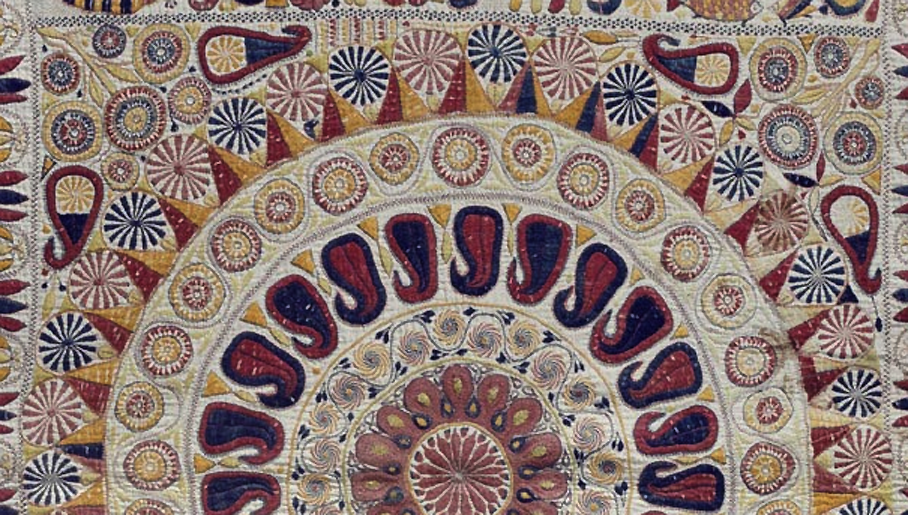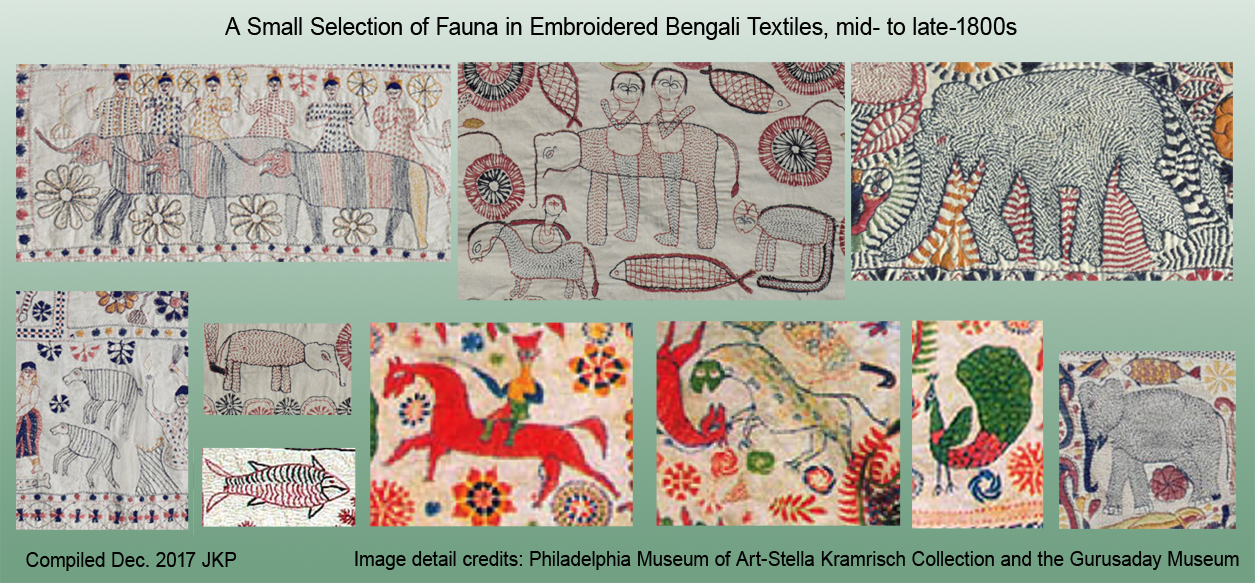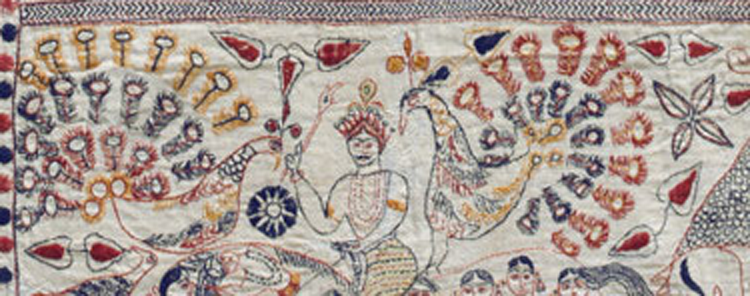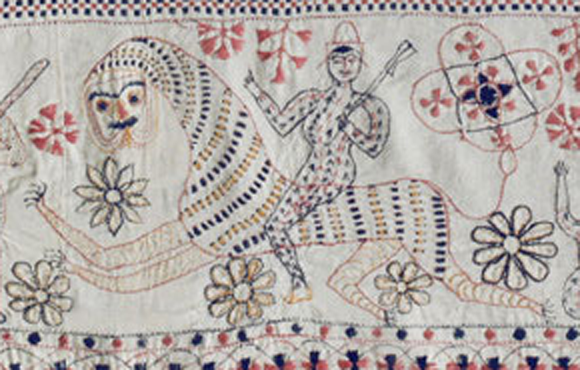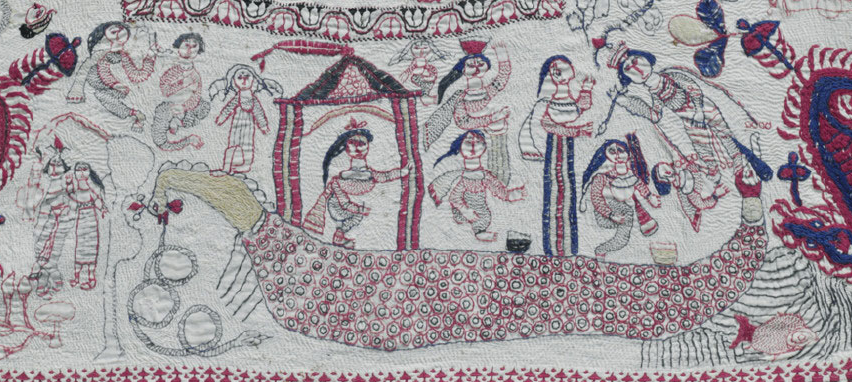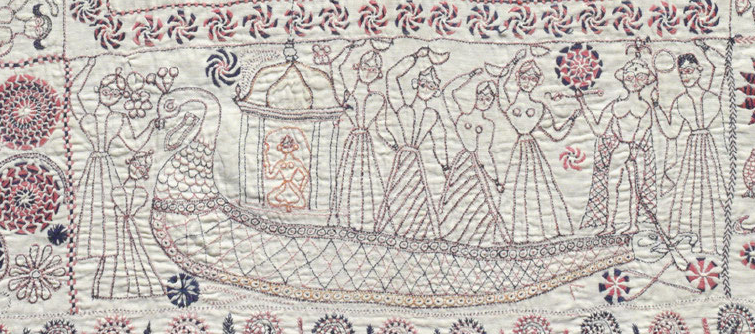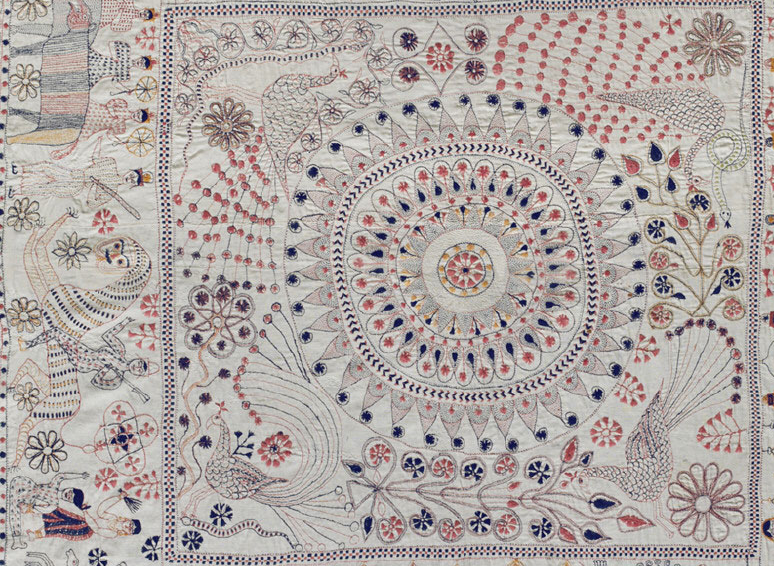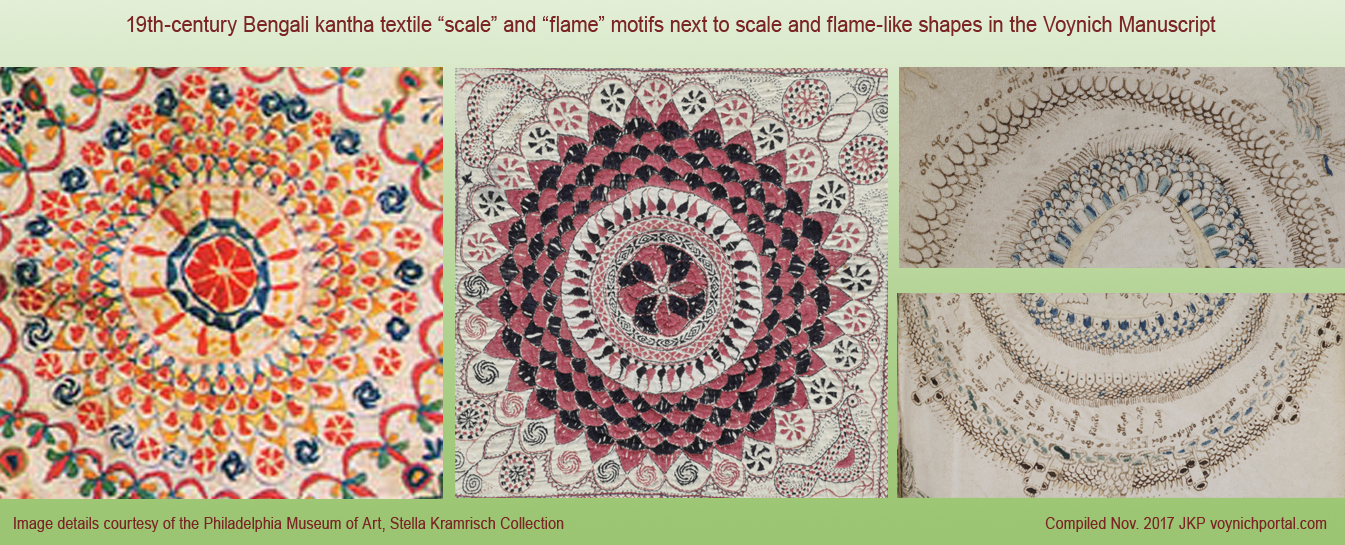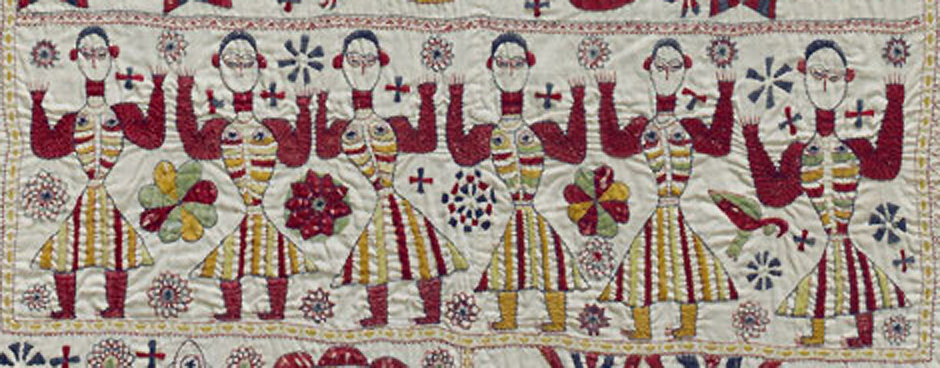20 December 2017
Is the spirit of the VMS illustrations embodied in crafts from the 1860s? I wanted to include these images in previous blogs about rayed designs here and here, but a disparity of 450 years is significant. If you believe in the VMS-as-a-modern-forgery theory maybe you don’t find it strange that a medieval manuscript resembles 19th-century textiles, but if you’re confident it’s from c. 1420, it may leave you peering at details for hours.
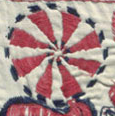 Medieval cultural exchange between east and west typically occurred through men. Women stayed home to feed and raise the children while men took perilous journeys by land and sea that often lasted three to six years. For those less inclined to brave searing deserts or savage seas, Arabic-speaking traders in north Africa and the Middle East served as intermediaries. Thus, Europe acquired astrology from Egypt and the Levant, numerals and exotic spices from India, ivory and ceramics from north and west Africa, and many illustrative and medical traditions from the Greeks.
Medieval cultural exchange between east and west typically occurred through men. Women stayed home to feed and raise the children while men took perilous journeys by land and sea that often lasted three to six years. For those less inclined to brave searing deserts or savage seas, Arabic-speaking traders in north Africa and the Middle East served as intermediaries. Thus, Europe acquired astrology from Egypt and the Levant, numerals and exotic spices from India, ivory and ceramics from north and west Africa, and many illustrative and medical traditions from the Greeks.
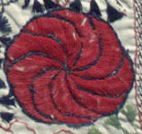 In contrast, textile embroidery was practiced mainly by women in rural communities who had less access to ready-made city wares (note, it was not uncommon for men to weave, but embroidery was usually left to the women). Living in isolation from men and often being barred from education, women developed distinctive vocabularies, and sometimes their own writing systems (e.g., the Nüshu phonetic script from China).
In contrast, textile embroidery was practiced mainly by women in rural communities who had less access to ready-made city wares (note, it was not uncommon for men to weave, but embroidery was usually left to the women). Living in isolation from men and often being barred from education, women developed distinctive vocabularies, and sometimes their own writing systems (e.g., the Nüshu phonetic script from China).
 They also developed their own illustrative traditions, passing down skills and ideas from mother to daughter. Unfortunately, textiles embellished by women were of a practical nature, they were used for clothing, food covers, and bed linens, and would wear out in a generation or two, leaving few records, and the ideas behind them were orally transmitted, making it difficult to study their origins and evolution.
They also developed their own illustrative traditions, passing down skills and ideas from mother to daughter. Unfortunately, textiles embellished by women were of a practical nature, they were used for clothing, food covers, and bed linens, and would wear out in a generation or two, leaving few records, and the ideas behind them were orally transmitted, making it difficult to study their origins and evolution.
The Quilts of East India
 Kantha is an ancient Indic embroidery tradition, but it is difficult to find examples more than 200 years old. Most of those in museums are from the latter half of the 19th century, but the way the decorative, repetitive elements are combined is not dissimilar to the VMS.
Kantha is an ancient Indic embroidery tradition, but it is difficult to find examples more than 200 years old. Most of those in museums are from the latter half of the 19th century, but the way the decorative, repetitive elements are combined is not dissimilar to the VMS.
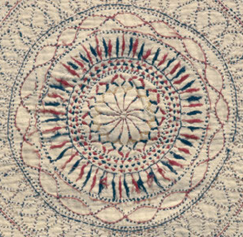 Common themes in kantha textiles include rayed designs, flowers, starbursts, family, flora, and fauna. You can even find cloudband shapes, circular diagrams similar to western depictions of the earth and stars, and circular rows of scales and points like those on the VMS “map” folio. Remember, these are 19th-century creations, so there was more exposure to outside influences, but they nevertheless retained many historic patterns.
Common themes in kantha textiles include rayed designs, flowers, starbursts, family, flora, and fauna. You can even find cloudband shapes, circular diagrams similar to western depictions of the earth and stars, and circular rows of scales and points like those on the VMS “map” folio. Remember, these are 19th-century creations, so there was more exposure to outside influences, but they nevertheless retained many historic patterns.
These are some typical rayed designs:
And some stylized plants similar to menorah-tree-of-life images, from two different quilts:
In the fauna category, elephants, snakes, birds, monkeys, and hoofed animals were popular and there are occasionally boars, sheep, and smaller cats. Being so close to China, one might expect dragons, but mythical animals were rare compared to those based on life:
In the following detail, note how the peacock feathers were drawn, almost like tubes or spikes. Even though the subject matter is different, the way it was expressed reminded me of the VMS plant that has roots with “bolts” and the rayed design on folio 69v:
Here’s a shape (left) that might be hard to recognize, until you turn it in the other direction, and add the rest of the picture and then it is less similar to the odd shape in the top-left corner of f116v as it seems at first glance. Even so, it’s an unusual way to draw a tail:
One critter that might be of interest to Voynich researchers is the long-necked maneless cat (possibly a tiger or leopard, although the tail is like that of a lion). Like many western medieval images of lions, it has a human-like face. Note that the rider is sexually ambiguous, dressed like a man but possibly having breasts.
Horses with riders are fairly common on kantha quilts, but a person riding a cat is infrequent, and similar to the astrological symbol for Leo in middle-eastern manuscripts. There is even a reference to God in Arabic on one of the quilts. In general, however, references to astrology (other than suns, moons, and stars) are not common in the kantha textiles of this era, so the image may only coincidentally resemble the middle-eastern Leo:
Storytelling in Kantha Textiles
Some designs are narrative, commemorating special occasions, journeys, Hindu legends, and daily activities:
Imagine if these ladies were nude. It’s not exactly the Baths of Pozzuoli but it is an example of repetitive use of female figures:
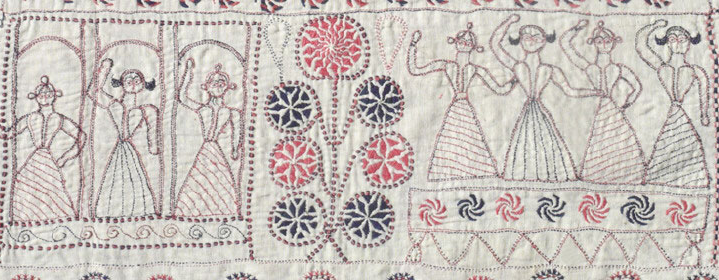 In fact, some of them are nude from the waist up in a quilt of a similar style:
In fact, some of them are nude from the waist up in a quilt of a similar style:
Could these ideas have reached the west in earlier times?
This kantha quilt (below) caught my eye because there was a certain aesthetic that emerged in southern France in the early medieval period that included “spinner” flowers (similar to those below right) and a stronger emphasis on deeper, brighter, warmer shades. I mentioned this in a previous blog about troubadors (some of which may have been Roma). There is a hint of this style in a few of the VMS flowers, as well:
More About the Circular Motifs
The following image, on the same kantha quilt as the long-necked cat, includes an infurled scalloped shape similar to a cloudband. Note also the dots inside the “scales” and the row of pickets around the outer edge, each with a spot attached to a string. The VMS “map” page has a number of similar patterns:
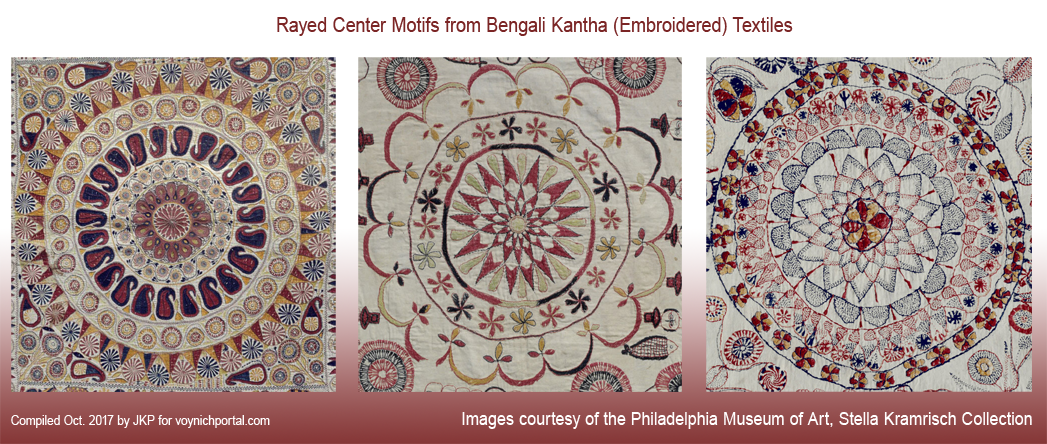 There are many instances of overlapping scale textures in the VMS. Scale patterns were common to many cultures, including Persian, Chinese, and many others, but it was interesting to see that scale and flame patterns are also found in the Bengali kantha:
There are many instances of overlapping scale textures in the VMS. Scale patterns were common to many cultures, including Persian, Chinese, and many others, but it was interesting to see that scale and flame patterns are also found in the Bengali kantha:
It’s not surprising that kantha from southern Asia have a mandala-like quality, but there are also distinctive differences between the mandalas associated with monasteries and those created by Bengali quilters. Many of the monasteries are Buddhist. Today, the religions in Bengal are split east-west between Islam and Hinduism (with only about 8 to 27% overlap). Not long after these quilts were made, a sizable portion of the east Bengalis moved farther east to Assam.
Summary
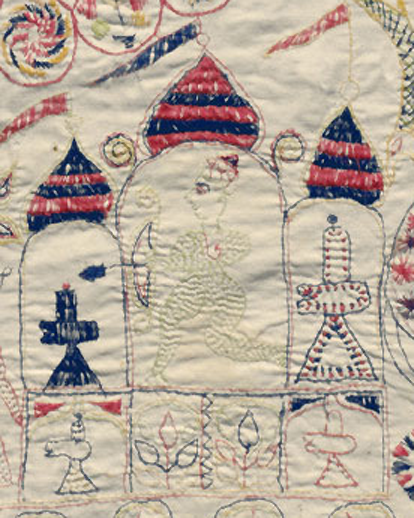 It was not my intention to draw direct parallels between 19th-century Bengali textiles and 15th-century manuscript drawings, but I was struck by the similarities when you look at some of the repetitive decorative elements.
It was not my intention to draw direct parallels between 19th-century Bengali textiles and 15th-century manuscript drawings, but I was struck by the similarities when you look at some of the repetitive decorative elements.
For years, I’ve searched the world for strong overlap, without much success. It’s easy to find a few examples here and there, but not all in the same place, and yet these interesting images occur within a dozen textiles.
Even when I scoured the cultural traditions of Afghanistan, Pakistan, Malaysia, and western India (many times since 2007), I didn’t locate as many similarities as I did in the Bengal/Bangladesh region, which surprised me because Bengal is near Nepal and SW China, and eastern India was never ruled by the Greeks and Romans in the same way as Pakistan and Afghanistan. Trade with this specific area was almost nonexistent in 15th-century Europe.
The odds of mostly rural Bengali textiles reaching the west are quite small (the Roma are said to be from the Sindhi area near the Pakistani border, not from eastern India, so it doesn’t seem likely they brought these). The designs are specific to the Bengal region (Pakistani, Afghani, and Persian textile designs have more in common with each other than with Bengal quilts), and whether it’s coincidence or not, they share a certain design aesthetic with the VMS in the way that repetitive textures are drawn.
Even if there’s no connection to the VMS, I thought you might enjoy them… you almost expect a string to connect the hands of these figures to the star-like medallions nearby:
J.K. Petersen
Copyright (c) 2017 J.K. Petersen, All Rights Reserved

